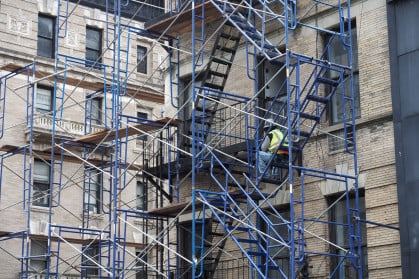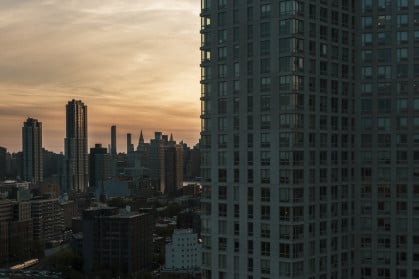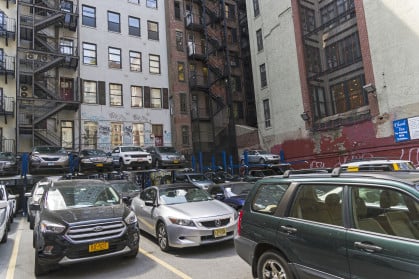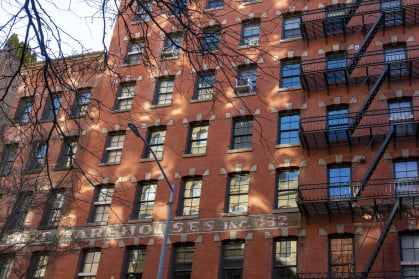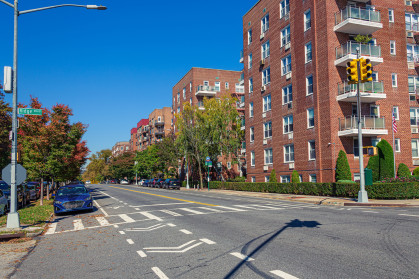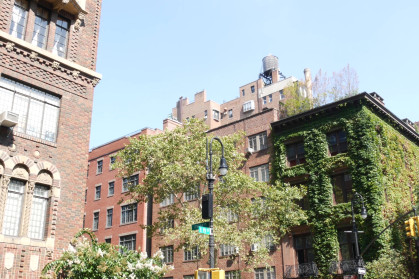The semi-secret building blacklist will no longer be hidden from co-op and condo boards
- Fannie Mae and Freddie Mac announce they will tell boards if their buildings don’t meet lending guidelines
- Why a condo or co-op building landed on the list and steps to correct the issue will also be conveyed
- The moves bring transparency for buyers, sellers, and boards who have largely been in the dark
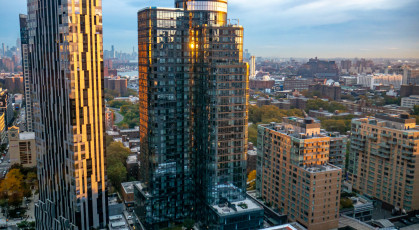
Freddie Mac says boards will have the ability to appeal an ineligible for lending status.
iStock
In a major shift with implications for apartment buyers and sellers, Freddie Mac and Fannie Mae are going to identify buildings they’ve designated off-limits to lenders and the reasons why and share this intel with condo and co-op boards.
The twin moves will bring greater transparency to buyers and sellers and boards, who have been largely in the dark about buildings that are designated unavailable for lending. Under the current system, this status is conveyed only to lenders, and it occurs when a building doesn’t meet Fannie Mae’s and Freddie Mac’s rules for financial, structural, and mechanical fitness, guidelines which were toughened after the Surfside condo tower collapse in June 2021.
For example, buildings that have low reserve funds or rely on assessments for structural repairs can find themselves on these no-go lists. Freddie Mac and Fannie Mae won’t buy back conforming loans made in these buildings, largely shutting off loans that are cheaper and easier to qualify for, and stymying sales for sellers.
Fannie Mae’s and Freddie Mac’s changes
In a post last week on its website, Freddie Mac says it launched a new system for identifying a building’s lending eligibility, including “project certified” and “not eligible” designations. If a building fails to meet lending guidelines, Freddie Mac says it “aims to proactively communicate” with homeowners associations (which are the equivalent of boards in NYC), including what steps are necessary to make the building eligible.
In addition, boards will be able to appeal their building’s non-eligible status. The appeal process for a not eligible status determination opens February 26th.
Fannie Mae is making a similar move. According to a spokesperson, it “will implement a web-based tool later in 2024 for condo homeowners’ associations (HOA) that provides HOAs the ability to determine if loans secured by the project are ineligible for sale to Fannie Mae and to understand the reason why they may not meet one or more of our published requirements.”
Information about how to access and use this tool will be posted online at a later date, the spokesperson says.
Why this is a big deal for buyers and sellers
This is a gigantic step for transparency, according to Orest Tomaselli, the president of the project approval division at CondoTek, which provides data on condos for lenders, and the CEO and president of Strategic Inspections, which conducts co-op and condo reserve studies. He estimates about 66 New York City condo and co-op buildings are currently on Fannie Mae’s unavailable for lending list.
He explains the move is primarily aimed at lenders, who have increasingly had to repurchase loans in buildings because they didn’t meet eligibility—a “devastating” outcome. Freddie Mac’s new system means an easier and less costly loan approval process for lenders, he says.
But the changes have major implications for the consumer side—buyers, sellers, and boards.
The added transparency will drive home the importance of buildings getting into compliance, which will ultimately benefit owners looking to sell. Some buildings have not been willing to take the unavailable for lending status seriously, Tomaselli says, and are stuck in old ways of funding critical building repairs by relying on assessments instead of shoring up their reserve funds or doing reserve studies, which the federal agencies require in order to approve lending.
“It’s been a battle to get them to understand,” he adds.
Expect to see lending status in listings
Smart New Yorkers are already clued into the headache of trying to buy in a building that is on the so-called lender blacklist. Some buyer’s brokers and their attorneys already ask whether a building is on the unavailable list before making an offer. That’s because buyers want to know if they are going to have trouble getting approved for financing.
But up until now, that information would be tough to obtain directly. That’s about to change.
Discussions about a building’s lending status “are absolutely something that is going to become more widespread,” Tomaselli says, adding that a building’s approved lending status could be something that’s touted in real estate marketing, listings, and by agents and sellers. It was a feature of real estate marketing a decade ago, and he thinks it’s something that could return as soon as the first quarter of 2024. “I’m already having conversations with real estate marketing teams,” he says.
By the end of February, condos and co-ops should be able to look up their building and have an interactive process with Fannie and Freddie and an appeals mechanism, says attorney Stephen Marcus of Allcock & Marcus, which represents New England condo associations. If you can’t wait that long, you can go to the firm’s website—they have been providing free searches for any condo or co-op building in the U.S. that wants to see if they are on Fannie Mae’s “blacklist” and work with buildings to get them off the list.
The Fannie Mae unavailable for lending list has grown to about 2,400 buildings across the U.S. as of late November, up from about 1,700 in May, Marcus says.
The firm has been a critic of the secrecy surrounding the lists—the firm filed two Freedom of Information Requests with the federal government. (The response was very curious: the Federal Housing Finance Agency, which is the conservator of Fannie Mae, said it didn’t have the list.)
Marcus says he thinks the new approach is much more helpful and gives buildings more options to get off the list or find local lenders.
He says providing the information to boards, rather than making them public, is also “a good thing.”
“There are 763 [buildings] on the list in Florida. If the Miami Herald published that list it would immediately decrease their value,” he says.
Florida is of course where this chapter started.
“We’re still feeling the impact of the Surfside condo collapse,” Marcus says, pointing to the new awareness that the tragedy brought to the problem of deferred maintenance. Stricter lending guidelines have the ultimately beneficial goal of making buildings physically and financially safe and putting an end to the practice of “kicking the can down the road,” he says.
Sign Up for our Boards & Buildings Newsletter (Coming Soon!)
Thank you for your interest in our newsletter. You have been successfully added to our mailing list and will receive it when it becomes available.

















